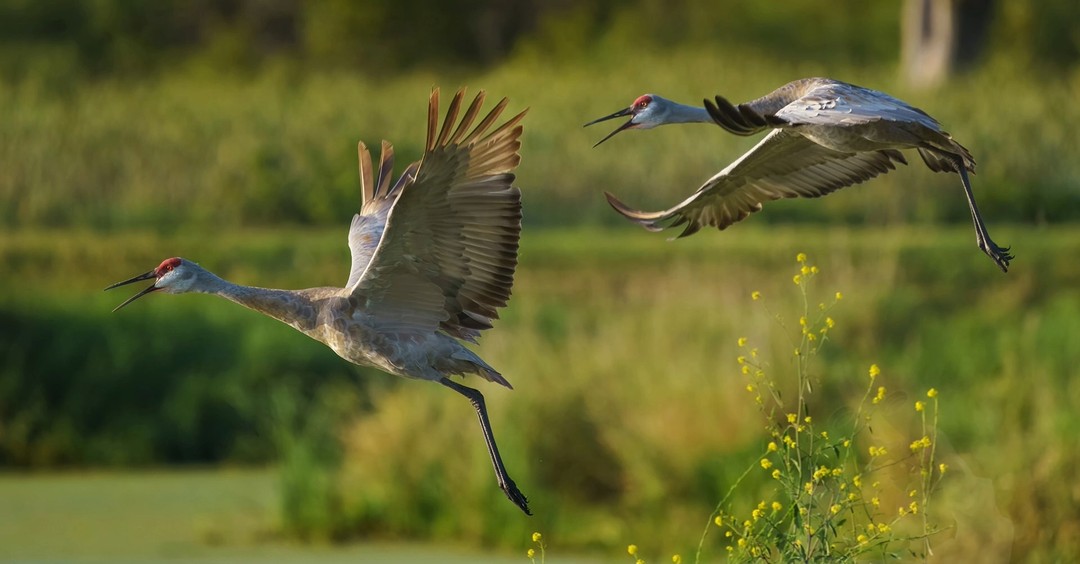- The significance of The Annual Midwest Crane Count in wildlife conservation and its impact on Sandhill and Whooping Cranes.
- The role of volunteers in conducting the crane count and the logistics involved in covering over 150 counties.
- The ecological importance of cranes in the upper Midwest and their contribution to biodiversity.
- Details on the sponsorship and partnership efforts that support this large-scale ecological survey.
- An exploration of the challenges and successes in crane conservation efforts across the Midwest.
The Annual Midwest Crane Count holds a pivotal role in the world of wildlife conservation. It is a remarkable effort spanning over seven states, conducted with the invaluable help of more than 2,000 volunteers. Every year in mid-April, these volunteers head to local wetlands, fields, and birding hotspots to observe and document the Sandhill and Whooping Cranes. This initiative is essential for understanding crane populations across the Midwest and helps to guide conservation strategies. With sponsorship from the Patti and Jack McKeithan Northwoods Fund, this project emphasizes community involvement and scientific research in harmony.
Volunteers are the lifeblood of The Annual Midwest Crane Count. Participants come from various backgrounds, all united by a common passion for conservation and avian study. Each volunteer is assigned an observation area within the 150 counties across Wisconsin, Illinois, Indiana, Iowa, Michigan, Ohio, and Minnesota. The logistics of organizing such a large-scale event are impressive, with coordinators working tirelessly to ensure accurate data collection. Volunteers rise before dawn, armed with binoculars and notebooks, prepared to spend the morning identifying crane calls and noting their behavior and numbers. This grassroots effort not only contributes invaluable data but also fosters a deep sense of shared purpose and community among participants.
The ecological significance of cranes in the Midwest cannot be overstated. Sandhill and Whooping Cranes are indicator species, meaning their population health reflects the overall health of the ecosystem. These majestic birds are known for their impressive size, unique calls, and elaborate mating dances. They primarily inhabit wetlands, which are crucial for biodiversity as they support diverse plant and animal communities. Every crane counted offers insights into the health of these environments and underlines the importance of wetland preservation. Moreover, cranes play a vital role in nutrient cycling and seed dispersal, contributing significantly to the balance of their ecosystems.
The success of The Annual Midwest Crane Count is heavily reliant on collaboration between organizations, sponsors, and local communities. The Patti and Jack McKeithan Northwoods Fund not only provides financial backing but also brings attention to the critical need for crane conservation. Partnerships with local environmental groups, state wildlife agencies, and educational institutions further expand the reach and impact of the count. These collaborations ensure that the data collected each year informs effective conservation strategies and policy decisions, aiding efforts to preserve crane habitats and support these species’ recovery.
Despite the successes, crane conservation is not without its challenges. Habitat loss due to agriculture, urban development, and climate change poses significant threats to crane populations. Pollution and human disturbances in wetland areas further complicate conservation efforts. However, thanks to ongoing research and initiatives like The Annual Midwest Crane Count, there have been positive strides in crane conservation. For instance, focused habitat restoration projects have led to an increase in breeding pairs and a gradual rise in crane numbers in many regions.
In summary, The Annual Midwest Crane Count is a testament to the power of community-driven conservation efforts. It plays a crucial role in protecting crane populations and ensuring the health of wetland ecosystems across the Midwest. By engaging volunteers and fostering partnerships, this initiative not only aids in the collection of essential ecological data but also raises awareness about the importance of conserving these magnificent birds and their habitats. As preparations for this year’s count continue, it’s clear that the dedication and commitment of all those involved remain key to the continued success of crane conservation efforts in the region.
*****
Source Description
The Annual Midwest Crane Count on Saturday, April 12, is less than two weeks away. Follow our profile link to get involved!
Each year in mid-April, over 2,000 volunteers travel to their local wetlands and favorite birding locations to participate in the crane count. This annual survey of Sandhill and Whooping Cranes spans over 150 counties in seven states of the upper Midwest, including Wisconsin and portions of Illinois, Indiana, Iowa, Michigan, Ohio, and Minnesota.
The Annual Midwest Crane Count is sponsored by the Patti and Jack McKeithan Northwoods Fund.
Photo: Sandhill Crane by Ryan Michalesko/International Crane Foundation


